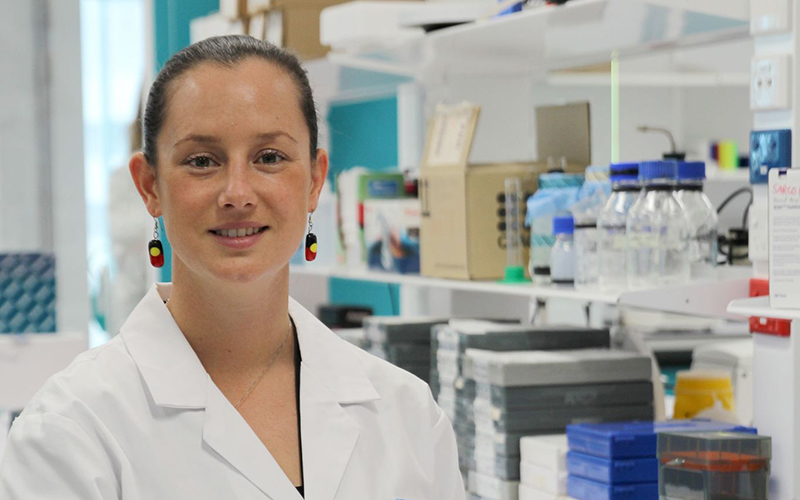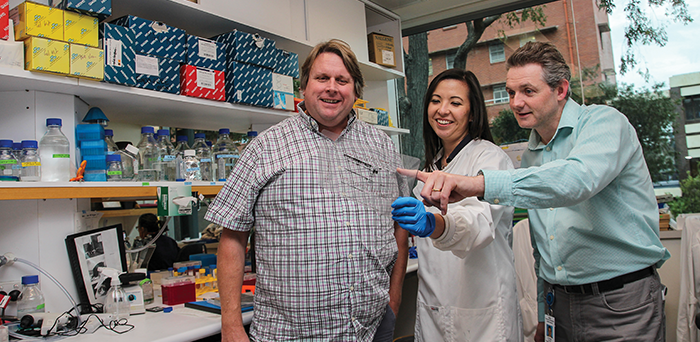Search

News & Events
The Kids cancer researcher named a Superstar of STEMThe Kids Research Institute Australia brain cancer researcher, Dr Jessica Buck will today join the ranks of a select group of brilliant female scientists.

News & Events
How to win friends and influence people: Cancer researchers talk the talk for big resultsIn the field of cancer research, lobbying efforts by the The Kids Cancer Centre have contributed to major initiatives including Australia’s first personalised medicine program for children with high-risk cancer, and a mission to boost survival rates in brain cancer patients.

News & Events
Pioneering new treatments for leukaemia in children with Down syndromeA team of world-leading scientists has secured $5 million in funding from the Leukaemia and Lymphoma Society to advance the fight against leukaemia in children with Down syndrome.
Research
Accumulation of CD103+ CD8+ T cells in a cutaneous melanoma micrometastasisResults support the emerging concept that CD103+ CD8+ tissue‐resident memory T cells are key mediators of cancer surveillance
Research
The dystroglycan receptor maintains glioma stem cells in the vascular nicheThese findings reveal a central role of the DG receptor, not only as a structural element, but also as a critical factor promoting mesenchymal-like GBM
Research
Targeting the bone marrow microenvironment: a novel therapeutic strategy for pre-B acute lymphoblastic leukemiaOur findings shed light on the mechanisms of leukemia-induced bone loss
Research
PI3K activation in neural stem cells drives tumorigenesis which can be ameliorated by targeting the cAMP response element binding proteinOur findings present a novel mouse model for glioma demonstrating that the PI3K pathway is important for initiation of tumorigenesis
Research
Contemporary survival endpoints: An international diffuse intrinsic pontine glioma registry studyThis study defines PFS and OS, and is the first describe post-progression survival in a large cohort of children with DIPG.
Research
A Phase I Study of the CDK4/6 Inhibitor Ribociclib (LEE011) in Pediatric Patients with Malignant Rhabdoid Tumors, Neuroblastoma, and Other Solid TumorsIn this. i study the MTD and RP2D, safety, PK, and preliminary activity of single-agent ribociclib were investigated in patients with neuroblastoma.
Research
High expression of connective tissue growth factor accelerates dissemination of leukaemiaFunctional role of CTGF in altering disease progression in a lymphoid malignancy
